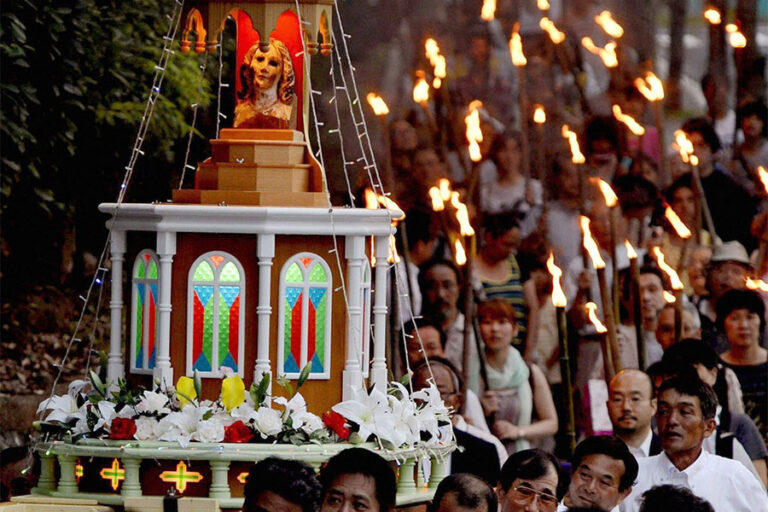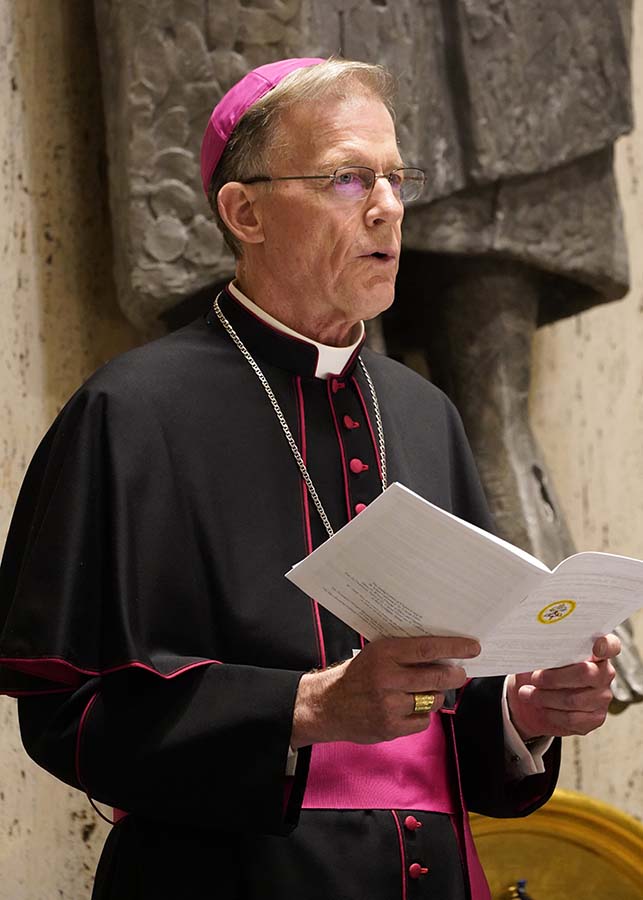“…There is a frustration that our world leaders are not listening. The tragedy of the 200,000 killed both in Hiroshima and Nagasaki seems to fall on deaf ears.
We are now in a nuclear arms race arguably far more dangerous than the first. We see countries modernizing their nuclear arsenals and spending scads of money in what appears to be (a move toward) ‘nuclear weapons forever.’”
By OSV News | August 6, 2024 catholicreview.org

Archbishop John C. Wester of Santa Fe, N.M., has traveled to Japan on a “pilgrimage of peace” commemorating the 79th anniversary of the atomic bombings of Hiroshima and Nagasaki during World War II. The pilgrimage, which the archbishop undertook last year as well, was announced Aug. 3 by the Santa Fe Archdiocese.
The attacks on the two Japanese cities — launched by the U.S. on Aug. 6 and 9, 1945, in an effort to force the unconditional surrender of Japan and hasten the end of the war — killed an estimated 110,000 to 210,000 people. The true number of casualties is “probably fundamentally unknowable,” according to nuclear weapons historian Alex Wellerstein.

During the multi-day pilgrimage, Archbishop Wester and Jay Coghlan, executive director of the nonprofit Nuclear Watch New Mexico, are meeting with Japanese and Korean bishops, civic and religious leaders, and survivors of the bombings known as “hibakusha” (from a compound Japanese word for “one who suffered in the explosion”). According to the Santa Fe Archdiocese, the visit is designed to foster “dialogue and solidarity in the shared mission to eliminate nuclear weapons globally.”
Archbishop Wester shared his thoughts on the pilgrimage with OSV News in an Aug. 6 email while on the road in Japan.
This Q&A has been edited for length and clarity.
OSV News: What has changed since your last pilgrimage? Have you seen progress, regression or both?
Archbishop Wester: I suppose what has changed is the addition of the Gaza war protest, which tells me that the people are committed to peace everywhere and at all times. So, while much is the same, there is a freshness to the events of Aug. 6 in Hiroshima, a sense that the bombing here 79 years ago gives those in Hiroshima a license, if you will, to speak out about war and violence and peace.
